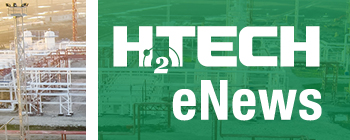News
Asahi Kasei receives Imperial Invention Prize in Japan for nickel-coated absorption layer
Asahi Kasei has received the 2025 Imperial Invention Prize from the Japan Institute of Invention and Innovation, the highest award presented at the 2025 National Commendation for Invention. The formal award ceremony is scheduled to be held on July 1, 2025. The company was honored for its invention of a nickel-coated absorption layer, which extends the service life of electrodes for chlor-alkali electrolysis (patent no. 6120804). This honor underscores Asahi Kasei’s commitment to continuous innovation in materials science and electrochemical processes.
Chlor-alkali electrolysis uses ion-exchange membranes to produce chlorine, caustic soda, and H2 through the electrolysis of brine. Since its commercialization by Asahi Kasei in 1975, this process has been adopted at over 160 plants in more than 30 countries worldwide (as of December 2024). In a commitment to its global support, the division held a Grand Opening Ceremony of its Houston, Texas office in late 2024. During this event, Asahi Kasei unveiled its "DENKAI AS ONE" model, making it a one-stop solution provider, offering electrolyzers, membranes, design, and operational support. The awarded nickel-coated absorption layer addresses a long-term key issue of the chlor-alkali electrolysis process: When the electrolysis is stopped due to temporary reductions in demand for chlorine and caustic soda, equipment malfunctions, or power outages, the electrodes—especially the cathode—deteriorate due to reverse current. This leads to problems such as increased power consumption and shortened cathode service life. Conventional measures have used mechanical solutions to suppress such reverse current. However, this approach is susceptible to malfunctions and operator errors, making it challenging to avoid cathode deterioration completely.
Installing a reverse current absorption layer with a nickel coating offers an alternative method to eliminate the need for mechanical equipment. When stopping the electrolysis process, the reverse current absorption layer undergoes a chemical reaction with the nickel, preventing cathode degradation and enabling the equipment's stable, long-term operation. The nickel-coated reverse current absorption layer overcomes an additional hurdle for electrolyzer operators. Previously, customers often had to compromise porosity for strength and vice versa. Asahi Kasei’s technology remedies this issue with its nickel-coated layer, which is both porous and sturdy while remaining processable over large areas. Commercialization was successfully achieved by applying nickel to a substrate with thermal spraying, which involves heating a material to a molten or near-molten state and applying it onto a surface to form a coating.
Akiyasu Funakawa, General Manager of Asahi Kasei’s Ion Exchange Membrane Research & Development Dept. said, “Chlorine and caustic soda are indispensable raw materials that form the basis of various products which support our daily lives. This prize is a great encouragement as I continue to work on developing electrolysis technology that contributes to the world.” Toshinori Hachiya, General Manager of the Microza & Water Processing Quality Assurance Dept. at Asahi Kasei, added, “In response to customer troubles, we have faced many issues and worked with many members to devise ideas. I am very happy that the results of our persistent efforts have been recognized in this way.” Chlor-alkali electrolysis equipment incorporating this technical breakthrough has already been adopted by chemical manufacturers worldwide, with market expansion continuing. Asahi Kasei is also investigating the technology’s applicability to other electrolysis processes, such as alkaline water electrolysis for green H2 production.



